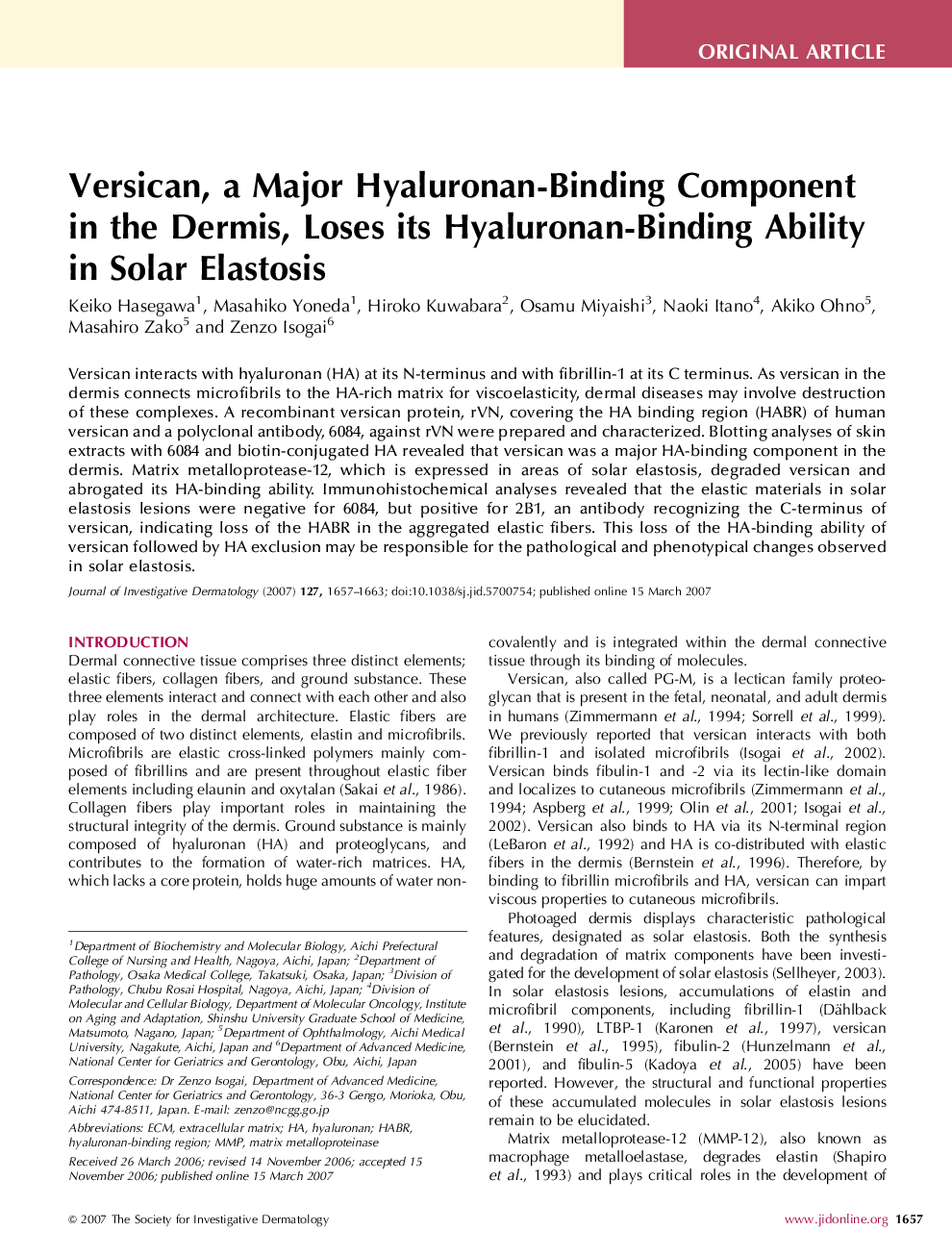| کد مقاله | کد نشریه | سال انتشار | مقاله انگلیسی | نسخه تمام متن |
|---|---|---|---|---|
| 3218494 | 1203646 | 2007 | 7 صفحه PDF | دانلود رایگان |

Versican interacts with hyaluronan (HA) at its N-terminus and with fibrillin-1 at its C terminus. As versican in the dermis connects microfibrils to the HA-rich matrix for viscoelasticity, dermal diseases may involve destruction of these complexes. A recombinant versican protein, rVN, covering the HA binding region (HABR) of human versican and a polyclonal antibody, 6084, against rVN were prepared and characterized. Blotting analyses of skin extracts with 6084 and biotin-conjugated HA revealed that versican was a major HA-binding component in the dermis. Matrix metalloprotease-12, which is expressed in areas of solar elastosis, degraded versican and abrogated its HA-binding ability. Immunohistochemical analyses revealed that the elastic materials in solar elastosis lesions were negative for 6084, but positive for 2B1, an antibody recognizing the C-terminus of versican, indicating loss of the HABR in the aggregated elastic fibers. This loss of the HA-binding ability of versican followed by HA exclusion may be responsible for the pathological and phenotypical changes observed in solar elastosis.
Journal: Journal of Investigative Dermatology - Volume 127, Issue 7, July 2007, Pages 1657–1663